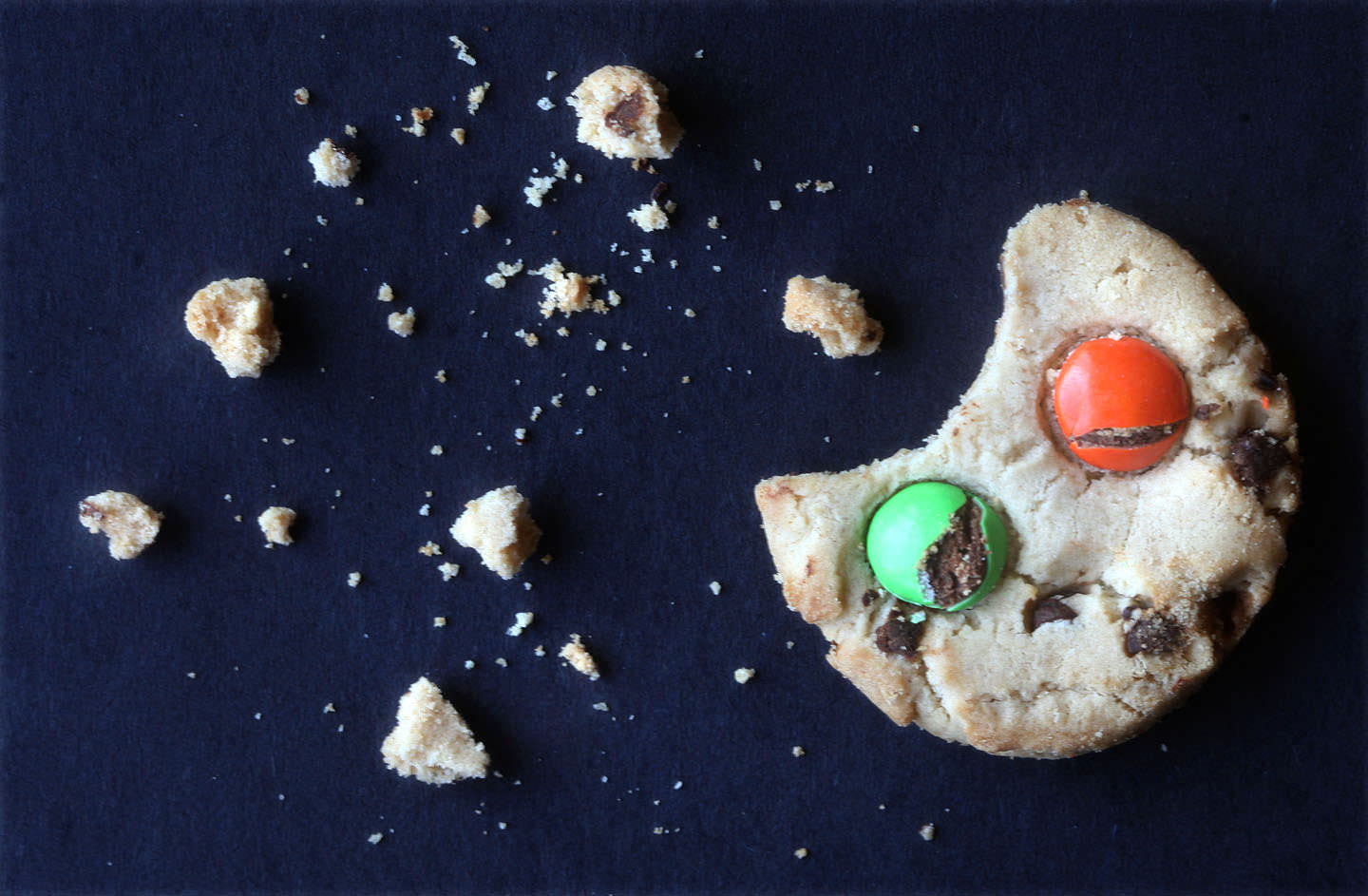Ready for Wednesday’s morning lunar eclipse? Some people – and I envy them at times – treat an eclipse more casually. They enjoy the show with no desire to set up a telescope or take a photo. For those of us can’t part with our cameras, here’s a little guide to help you get better pictures.
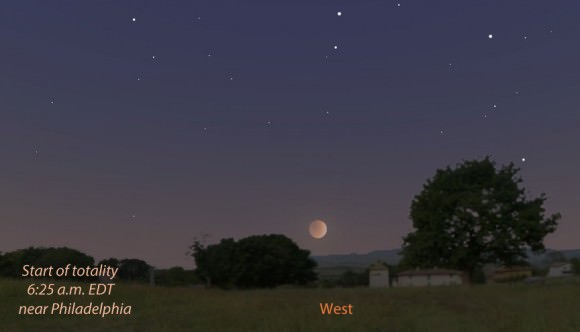
If you’re also into photography and would like to grab a few shots, here are a few tips on what equipment you’ll need and camera settings. This eclipse offers unique opportunities especially for the eastern half of the country because the eclipsed moon will be low in the western sky near the start of and during morning twilight.
In the Midwest at the start of the hour-long totality, the red moon will be about 20º (two fists) above the western horizon. From the East Coast the moon slips into total eclipse only a half hour before sunrise 6-7º high. So if you live in the eastern half of the country, find a site with a good view to the west.
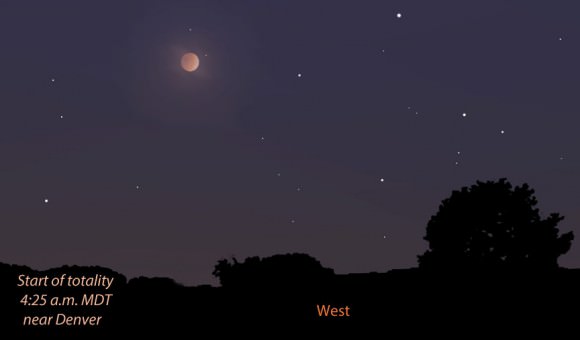
A low moon means easier framing with a pleasing foreground like a grove of fall trees, a church or distant line of mountain peaks. And the lower it drops, the longer the telephoto lens you can use to enlarge the moon relative to the foreground. When the moon is high in the sky it’s more difficult to find a suitable foreground.
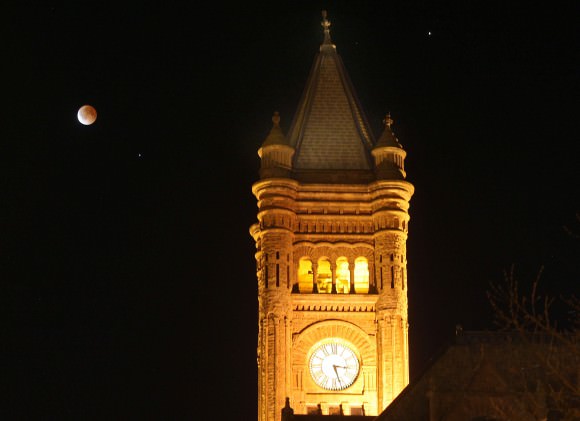
As the scene brightens during twilight, balancing the light of the dim moon, your photos will get even more interesting. Textures and details in foreground objects will stand out instead of appearing as silhouettes.
Use the table below to plan when to watch depending on your time zone. The blanks mean the moon will have set by the time of the event.
Eclipse Events EDT CDT MDT PDT
| Penumbra first visible | 4:45 a.m. | 3:45 a.m. | 2:45 a.m. | 1:45 a.m. |
| Partial eclipse begins | 5:15 a.m. | 4:15 a.m. | 3:15 a.m. | 2:15 a.m. |
| Total eclipse begins | 6:25 a.m. | 5:25 a.m. | 4:25 a.m. | 3:25 a.m. |
| Mid-eclipse | 6:55 a.m. | 5:55 a.m. | 4:55 a.m. | 3:55 a.m. |
| Total eclipse ends | 7:24 a.m. | 6:24 a.m. | 5:24 a.m. | 4:24 a.m. |
| Partial eclipse ends | ——— | 7:34 a.m. | 6:34 a.m. | 5:34 a.m. |
| Penumbra last visible | ——— | ——— | 7:05 a.m. | 6:05 a.m. |
Exposures and lens settings
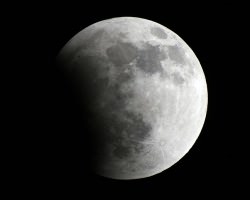
The full moon and even the partially eclipsed moon (up to about half) are so bright you can shoot a handheld photo without resorting to a tripod. Exposures at ISO 400 are in the neighborhood of f/8 at 1/250-1/500 second. Only thing is, all you’ll get is the moon surrounded by blackness. These exposures are so brief almost nothing will show in your foreground except for possibly moonlit clouds. That’s usually fine for the early partial phases.
Once the moon is more than half smothered by shadow, open up your lens to a wider setting – f/2.8 to f/4 – or increase the exposure. Let the back of the camera be your guide. If the images look too bright, dial back. If too dim, increase exposure or open the lens to a wider aperture.
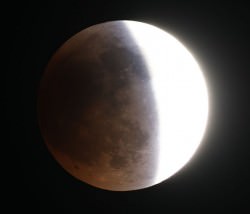
While you can continue to shoot the partially eclipsed moon at f/8 from 1/30-1/125 second, you’ll miss the best part – the portion filling up with Earth’s red shadow. To capture that, break out the tripod, open the lens all the way up – f/2.8-f/4 – and expose at ISO 400 between 1/4 and 1 second.
You can also shoot at ISO 800 and cut those times in half, important if you’re using a longish telephoto lens. Remember, Earth’s rotation means the moon’s on the move and will show trailing if you expose longer than a few seconds. On the other hand, this won’t be a problem if you’re shooting with a wide angle lens though they have their limits, too.
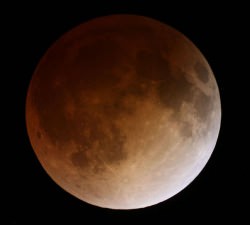
During totality, expose anywhere from 1/2 to 5 seconds at f/2.8-4.5 at ISO 400. Let’s say you want to include both scenic foreground and stars in the picture using a wide angle or standard lens. Dial up the ISO to 800, open your lens wide and expose between 6-10 seconds. On the 6-second end you’ll catch only the brightest stars, but the moon won’t show trailing; on the longer end you’ll get lots more stars with some overexposure of the eclipsed moon.
Of course, you can go to even higher ISOs and shorten exposure times considerably. But in all but the newest, high-end cameras that comes at the price of increased graininess and less color saturation.
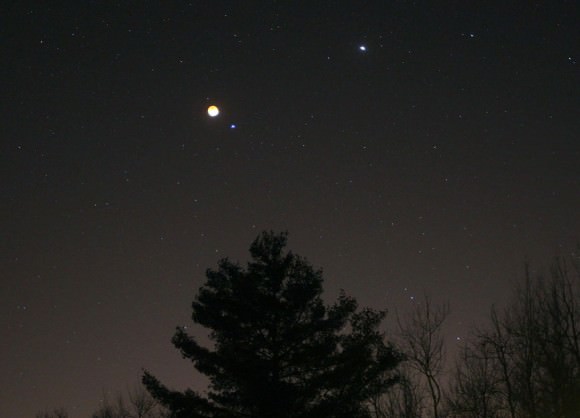
Where parts of the eclipse happen in twilight, even mobile phones may suffice. There should be enough light to capture a pretty scene with the moon just emerging from total eclipse and during the ensuing partial phases.
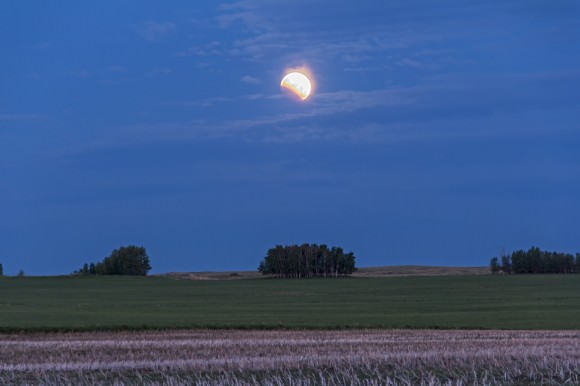
If you’re clouded out or on the wrong side of the planet for the eclipse, you can catch live webcasts from the following sites:
* Gianluca Masi’s Virtual Telescope
* Griffith Observatory in Los Angeles
* SLOOH
Clear skies!

